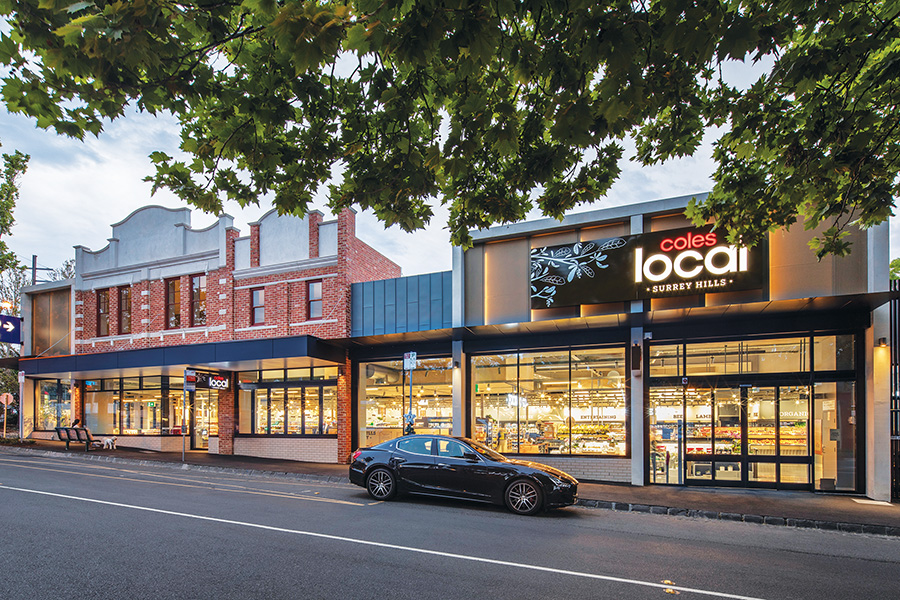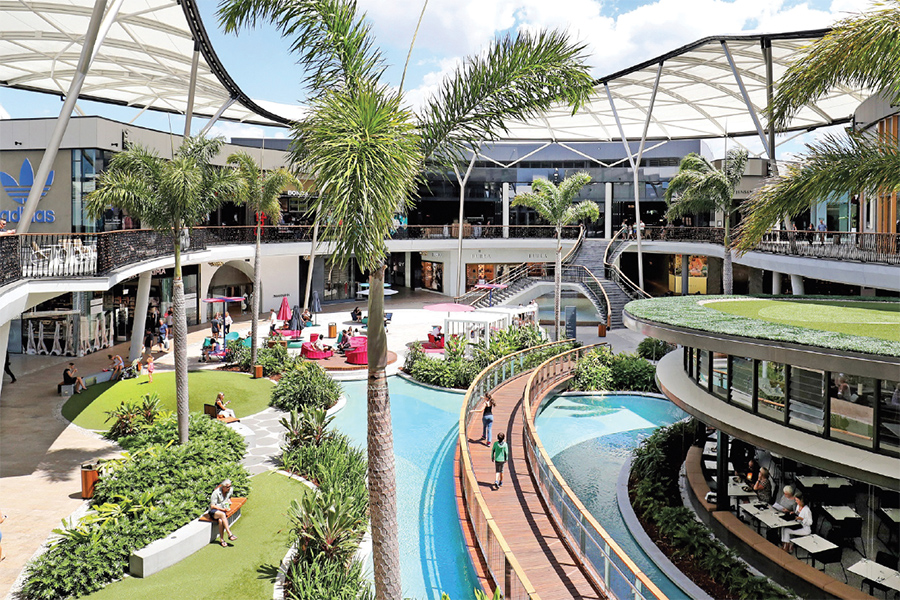Not often we feature a retailer in our cover story; we’ve done it before, but only when that retailer has a significant influence on our business. We all know Coles and we all do property deals with them; but it’s now a different entity. Since the beginning of the Coles Myer empire 35 years ago, Coles has continually been part of a large conglomerate. It’s now out on its own; master of its own destiny. It’s young, vibrant and its culture has changed. Coles in its new form is less than one year old. Its share price in March was $11.12. As we go to press, it’s $14.60 – a 24% hike! They must be doing something right. Read on!
Lots in the news lately about department stores; David Jones and Myer. As with many retailers, they’re finding the going is tough; new strategies and new thinking are required and recently, both have expressed the need to ‘downsize’. The press, in its obsessive desire to sensationalise, has seized on this, translating it into a negative for shopping centre owners. Along with the ‘threat of ecommerce’, falling retail sales and a flat wage growth, we’re now seeing the ‘analysts’ adding department store downsizing to the list of negatives for the future of our industry. Perhaps it’s time to look at a counter viewpoint.
A key word in the above is ‘analysts’ but that’s a misnomer in itself; they’re not analysts at all. Newspapers used to have analytical capability but those days are long gone. Today, overworked, stretched ‘reporters’, are forced to fill pages, write copious amounts of text that previously would have been compiled by four or five journalists, and to include in that copy as much sensationalism as possible. That, broadly speaking, is the nature of the Australian press at the moment. Of course, there are exceptions, but they, as the saying goes, only prove the rule! In the popular press, there is little in the way of analysis; quite simply, those writing know very little of their subject matter.
Today, the shopping centre industry in Australia faces many challenges. Little has changed; that’s always been the case. In the 1960s and ‘70s, it was about getting sites; there was keen competition and in order to fund a project one needed to show an ROI of about 10%. Challenging stuff.
By the mid-‘70s Home Loan interest rates had started to climb; for years they’d hovered around 4-6% but by the end of the 70s they’d topped the 10% mark. They continued rising through the ‘80’s and as the 1990s arrived they’d gone over the 16% mark! After you’d paid your mortgage, not much was left for retail. Challenging stuff!
And with the 90s the whole retail landscape changed. Discount stores emerged; mini majors with ‘disposable’ clothing took on the traditional fashion outlets. New shops and new usages emerged; Dunlop tennis shoes were replaced by ‘sporting footwear’ and brands never before seen took the market by storm – Nike, Adidas, Puma et al. And remember, at this time we were yet to see the computer shop!
One could go on about the changing nature of retail and all its complexities. And here, at the centre of it, the shopping centre industry, following market trends, looking to provide consumer satisfaction for its shoppers, constantly fine tuning its offer, often making radical changes, whilst all the time, for a period of more than 50 years, whatever the financial scene, constantly and invariably providing an ROI and a yield that beat inflation by at least 1% a year. That was the Australian shopping centre industry; the most professional and best performing major property sector in the world.
And today there are challenges, accepted, but no more daunting than those of yesterday; different but no more severe. And so, what if the department stores downsize? Then we’ll have more space to lease; anything new in that?
It’s unlikely they (department stores) will succeed without some drastic and ‘game changing’ strategies. Downsizing and cutting costs are no more than a rearrangement of the deck chairs on the Titanic. In the days when you couldn’t put together a major shopping centre proposal without a pre-commitment from a department store, there were really only two players – David Jones and Myer. They knew their power and demanded low rents and huge spaces. But those days are gone and no longer is a major centre’s valuation, significantly influenced by the presence of a department store. The cold bare fact is that we can take them or leave them, it doesn’t matter very much; today’s shopper doesn’t visit a major centre with the main purpose of shopping in a department store.
We are custodians of public places, of town squares, of village greens, of community focal points. People will not relinquish the pleasure of social interaction; it’s more than a pleasure, it’s a human characteristic and a human need. What people do in their public places will change; if those places are managed well and receptive to change, they will prosper. Those businesses that profit from change, exploit it and contribute, will always lease space in public places – in shopping centres.
The retail industry is facing real challenges at the moment. No one has the answers; we’re in a learning period. What the smart operators are doing – both retailers and landlords – is working together to seek solutions. The cover story this issue features the Coles Group; its got a new structure, a forward-thinking team and a bright future. Its Head of Property told SCN, “We used to have a ‘transactional relationship’ with landlords; now it’s one of ‘partnership’”.
Sort of says it all!





















